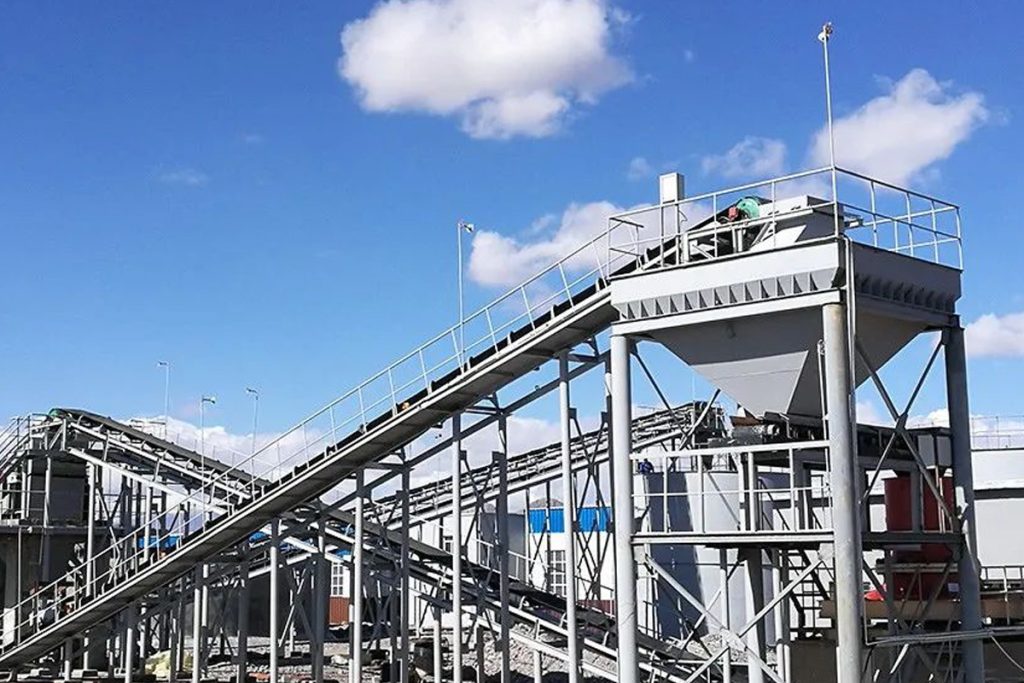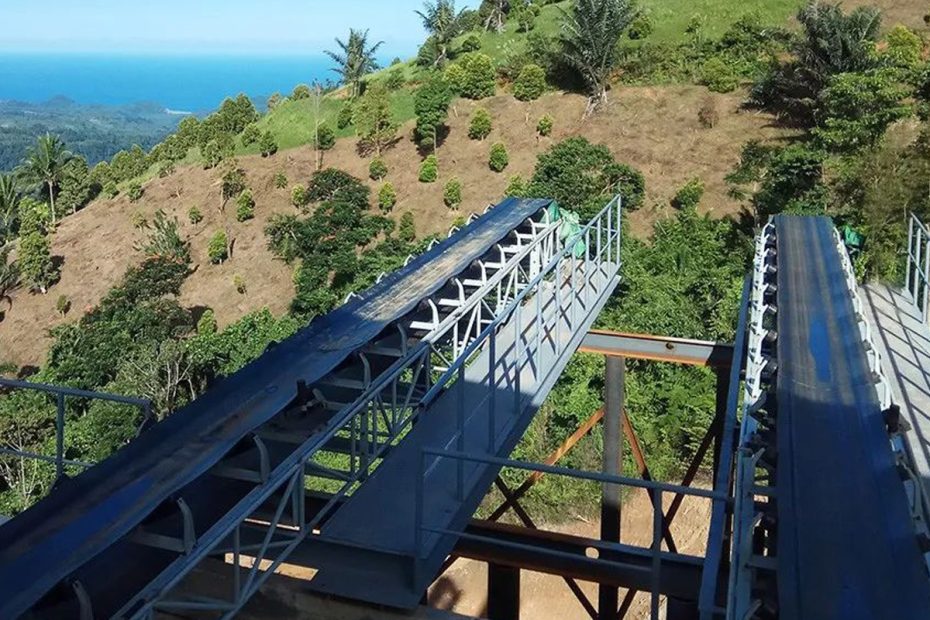Belt conveyors are indispensable tools in the world of material handling, designed to efficiently transport goods from point A to point B. However, even the most well-engineered conveyor systems can encounter issues that disrupt this seamless journey.
Sometimes issues in the Belt Conveyors system can lead to shut downs, damage to the system, or even hazardous conditions for workers.
Top 3 key features of Belt Conveyors
- Efficient Transport : Belt conveyors efficiently move goods from one location to another, making them a fundamental part of manufacturing, distribution, and logistics.
- Versatility : They can handle a wide variety of materials, from small, loose items to heavy bulk goods, thanks to adjustable belt widths and speed settings.
- Reduced Labor : Belt conveyors minimize the need for manual material handling, saving time and reducing the risk of workplace injuries.
Common Causes of Belt Misalignment
Belt misalignment can result from a variety of factors, including uneven loading, belt tension, and conveyor frame issues. When misalignment occurs, it can lead to belt damage, spillage, increased maintenance, reduced system efficiency, and in some cases, complete system shutdown.
Top 4 Common Causes of Belt Misalignment
- Improper Loading: Uneven loading or overloading of the conveyor can cause the belt to drift.
- Belt Tension Issues: Inadequate or excessive belt tension can result in misalignment.
- Uneven Idler Rollers: Worn or improperly aligned idler rollers can cause the belt to shift.
- Environmental Factors: Temperature variations, humidity, and contamination can affect the belt’s tracking.
Top 4 Consequences of Belt Misalignment
- Belt Damage : The constant friction and rubbing of the belt against the conveyor frame can lead to premature wear and damage, requiring frequent replacements.
- Material Spillage : Misalignment can cause materials to spill off the conveyor, leading to loss, contamination, and safety hazards.
- Increased Maintenance : Frequent misalignment issues result in higher maintenance costs and downtime, affecting productivity.
- Reduced System Efficiency : Misalignment negatively impacts the conveyor’s efficiency and throughput, increasing operational costs.
Causes of belt conveyor belt deviation
Belt misalignment occurs when a conveyor belt no longer follows its intended track and starts drifting to one side. This is simply defined as when the belt is no longer aligned with the track that it is supposed to be following. You will notice this because the belt will drift to one side or the other.
There are two categories of causes that will causes the rollers to not meet the criteria above. They are environmental conditions and machine conditions.
ENVIRONMENTAL CONDITIONS
These are considered to be things that you are doing that cause the belt to mistrack. Environmental conditions often inhibit the “clean” necessity that allows belts to properly track. Carryback is often a result of an unclean system that has too much dirt, dust, or material build-up. A preventive measure that can prevent this would be the installation of belt scrapers.
Loading conditions are another example of environmental conditions that may cause the belt to mistrack. Off center loading is when materials are loaded heavily on one side of the belt instead of being evenly distributed. This causes more tension on one side of the belt and the belt will then track to that side. Segregated loading is another less common loading condition that may lead to mistracking. When materials of different sizes are being conveyed, the vibrations of the machine will cause the smaller pieces to go to the bottom where the larger pieces will stay at the top. This causes the material to be unloaded in different directions and therefore puts more pressure on one side of the head pulley. A great way to prevent this is to use a center drive instead of an end drive.
Improper skirting conditions is the last of the environmental condition that will lead to mistracking. The best way to prevent this is to make sure to support the belt with closely stacked idle pulleys.

MACHINE CONDITIONS
These are defined as things that you have that are causing the belt to mistrack. Machine conditions often apply to the “rolling”, “aligned”, and “touching the belt” necessities for proper tracking.
Bent, loose, or misaligned rollers/ machine structure is one of the most common improper machine conditions. It is important that all terminal pulleys are aligned. Terminal pulleys include the drive, tail, bend, and take up pulleys. One needs to always keep in mind that the belt will always run to the side of the roller that the belt touches first. This is due to the fact that this side will always have the most tension. Therefore if the belt is running off the side of a certain roller, you always need to adjust the one previous to it.
Seized rollers are a prime example of not rolling that will lead to mistracking or even blockages (we will address this later on). This issue is usually due to the roller’s construction. Steel rollers have the tendency to seize more than any other material. Seizing can cause the rollers to have sharp edges that can further damage the belt and the system as a whole.
Splicing, lacing, and belt storage are another machine condition that allows for mistracking. It is very common for the corners of the belt to not be exactly square. If you use non-squared edges as a measurement for making your splice, you may end up with a crooked splice or mismatched lacing. When this happens tension will not be equal across the width of the belt. The belt will then pull to the side of the lacing/splice that has more tension. To prevent this, use an average center line. To get this you will measure halfway across the width of the belt at several points lengthwise. You will then connect these spots with a pen/chalk and use this line to square up the lacing/splice.
Solution to Belt Misalignment Problem
| Problem Cause | Solution |
|---|---|
| Improper Loading | Implement uniform loading procedures |
| Belt Tension Issues | Adjust and maintain proper belt tension |
| Uneven Idler Rollers | Regularly inspect and replace worn idler rollers |
| Environmental Factors | Install protective measures like covers or guards |
Measures to prevent belt misalignment
- Regular Maintenance : Implement a routine maintenance schedule, including inspections, adjustments, and replacements of worn components.
- Proper Training : Train operators and maintenance staff on how to identify and address misalignment issues promptly.
- Use Belt Training Systems : Consider using belt training systems, such as guide rollers or tracking devices, to automatically correct misalignment.
- Protective Measures : Shield your conveyor from environmental factors that can lead to misalignment, such as extreme temperatures or dust.
Conclusion
Belt misalignment of belt conveyor system is a challenge that can disrupt the seamless operation of conveyor systems, leading to damage, spillage, increased maintenance, and reduced efficiency. By understanding the common causes of misalignment, recognizing its consequences, and implementing preventive measures, you can keep your conveyor system on the right track. Proper maintenance, training, and the use of advanced tracking systems are key to maintaining the reliability and efficiency of your belt conveyor system. With these strategies in place, you can ensure that materials continue to move smoothly from point A to point B.
